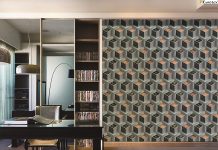Minimalism is a movement that has its roots in America and other cultures as well. Its Japanese and Scandinavian heritage is well known, where it has a strong dominance. Minimalist interior design is a surefire way to create a warm, nuanced home that will never go out of style.
This style is characterized by using only the right elements in all senses, it is antagonistic to baroque, overly elaborate, and excessive elements. The minimalist houses bet on the less is more, so that each space is functional, without neglecting the style. The color white is combined here with other elements to stop being cold; it can be with wood or marble.
In this post, I have a compilation of how you can adapt the different sections of your home in minimalist spaces.
1. Bathroom
The bathroom is one of the most interesting places to create a different or alternative atmosphere for all other spaces in the home. From color ranges that we would not dare to use in the living room to exotic plants that allow us to create an extension of the balcony or garden. In all cases, a bathroom is a place where we have to combine several needs such as hygiene, functionality, and visual appeal.


2. Bedroom
The light is a priority factor in minimalist spaces, it is there where the use of neutral colors becomes important since they help to achieve a sensation of amplitude and lightness. The best advice with the use of color is not to abuse it. Pictures in the form of a triptych, lamps or a carpet in bright or contrasting colors are welcome. Just respect the rule of less is more.


Also read: How to Create an Industrial Style
3. Kitchen
In a small, minimalist kitchen, there are plenty of big boxes and even recipe books. This style only requires what is necessary and any element that is not for the preparation of food should be removed from the room. Regarding the elements, accessories, and appliances, they should have calm colors, easy to assimilate, and of a single tone; not degraded, not printed, and not mosaic.


4. Dining room
Hard, glossy flooring is generally the preferred choice because it reflects light and has an easy to clean surface. If space permits, you can use an area rug to define specific points. Neutral colors work well, or if you prefer one with a design, opt for geometric shapes to match the décor or furniture.


One of the approaches of minimalism is to increase the importance of the main thing and to minimize the distractions for the user. Obviously, the decoration you choose for your spaces is related to your tastes, preferences and what you want to project. Those who love minimalism will understand perfectly that “the fewer things you have in a space the better”.
Translated and adapted by Noobuzz staff.
Sources: Facilisimo







